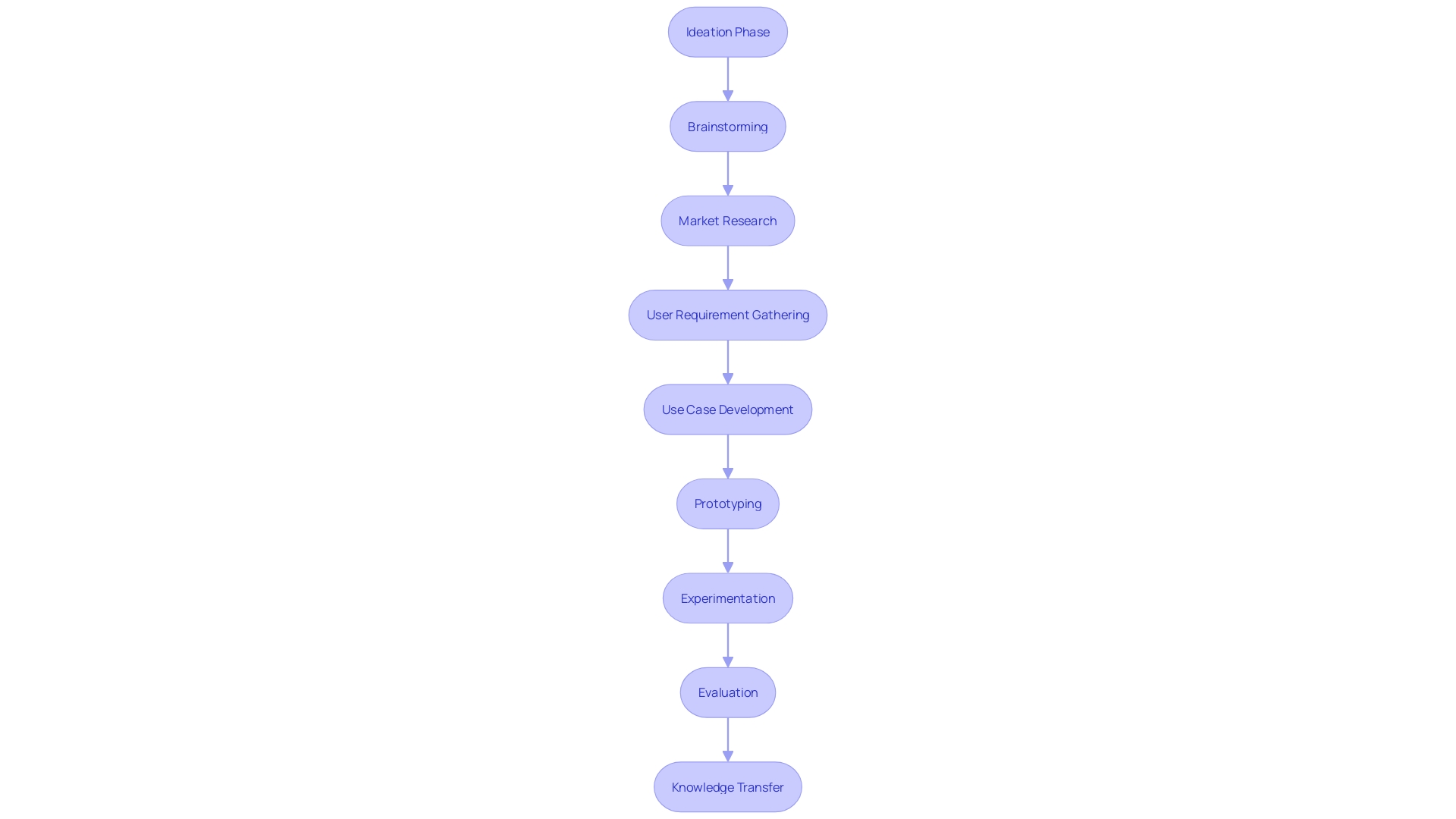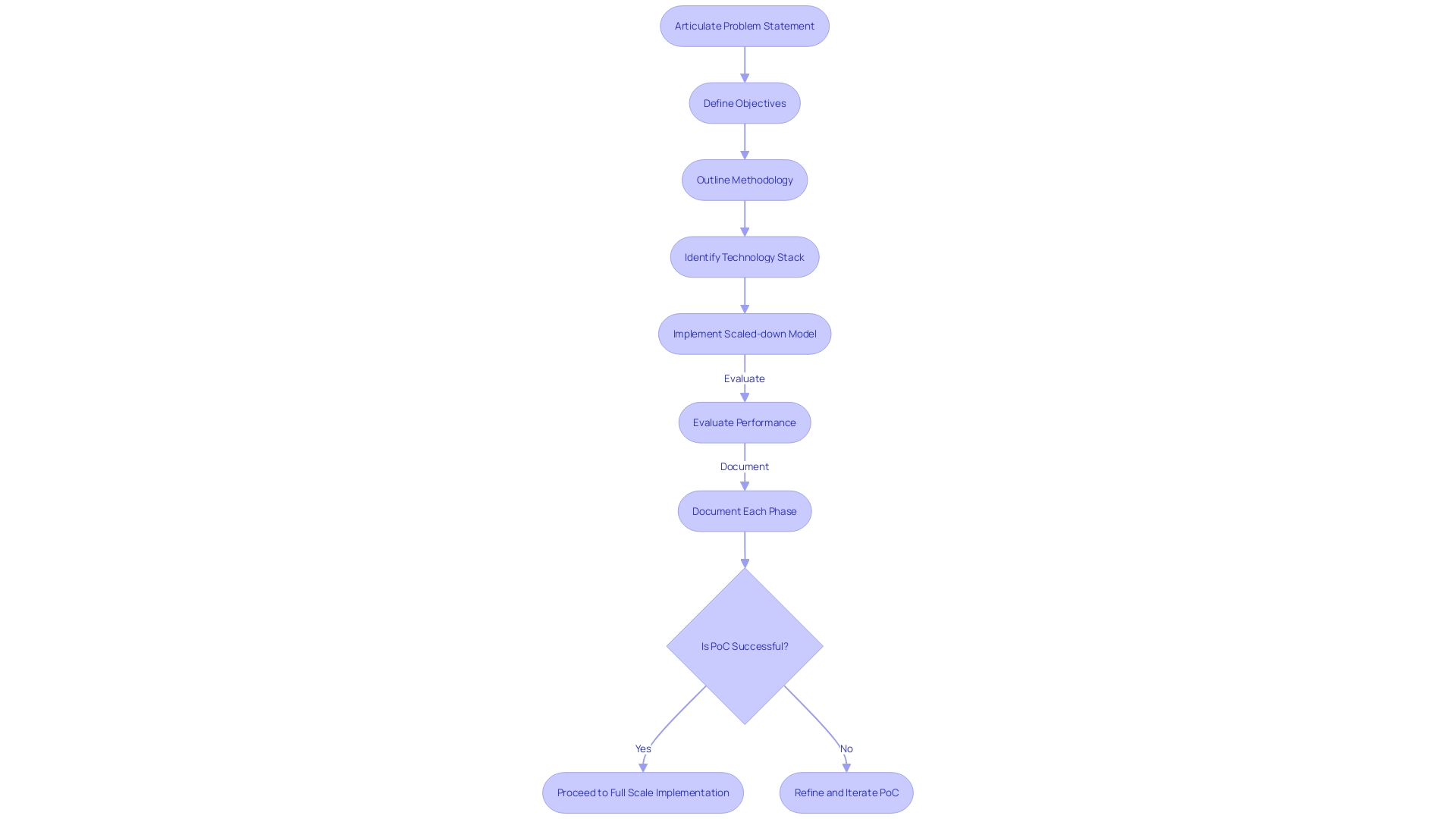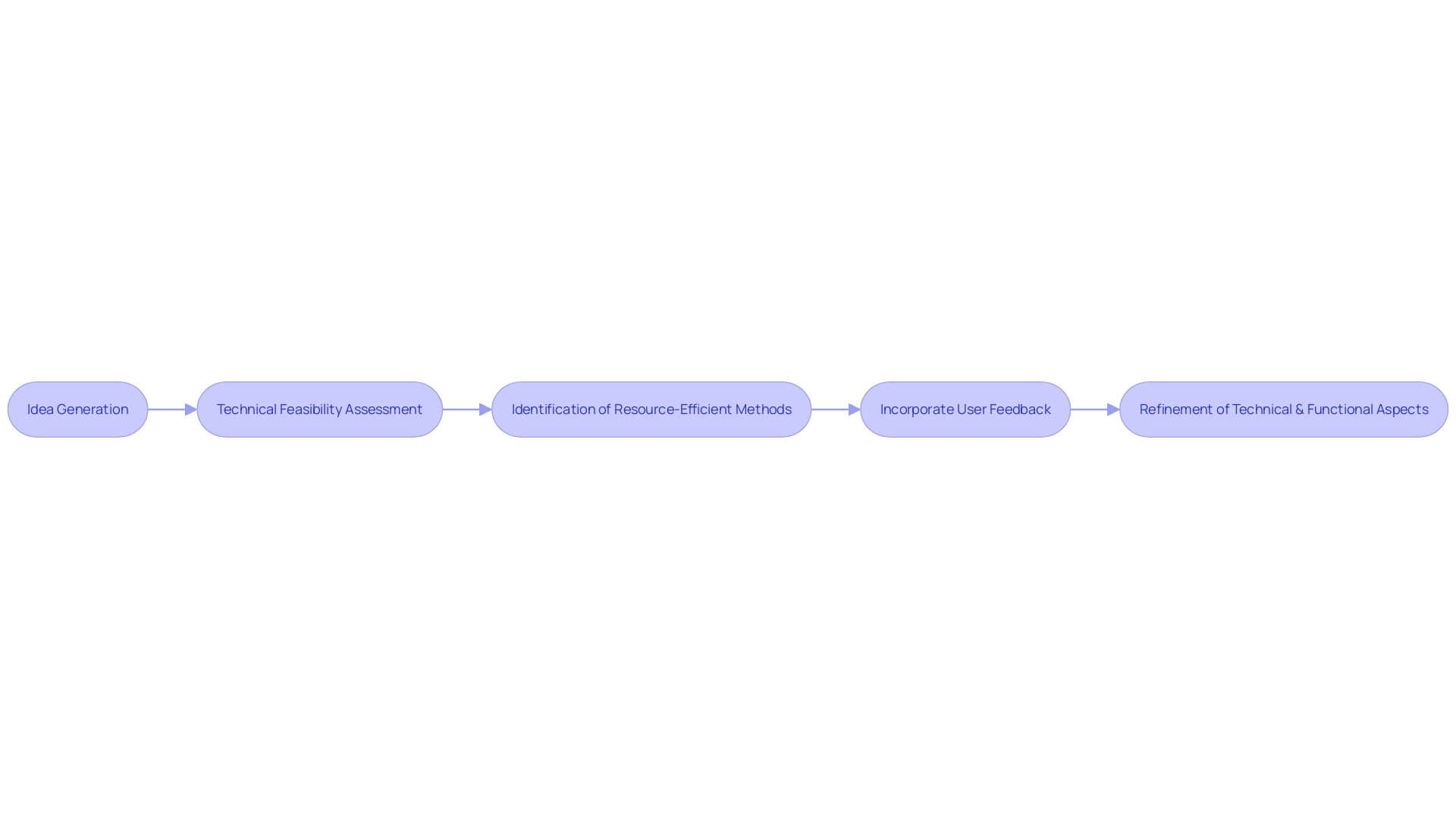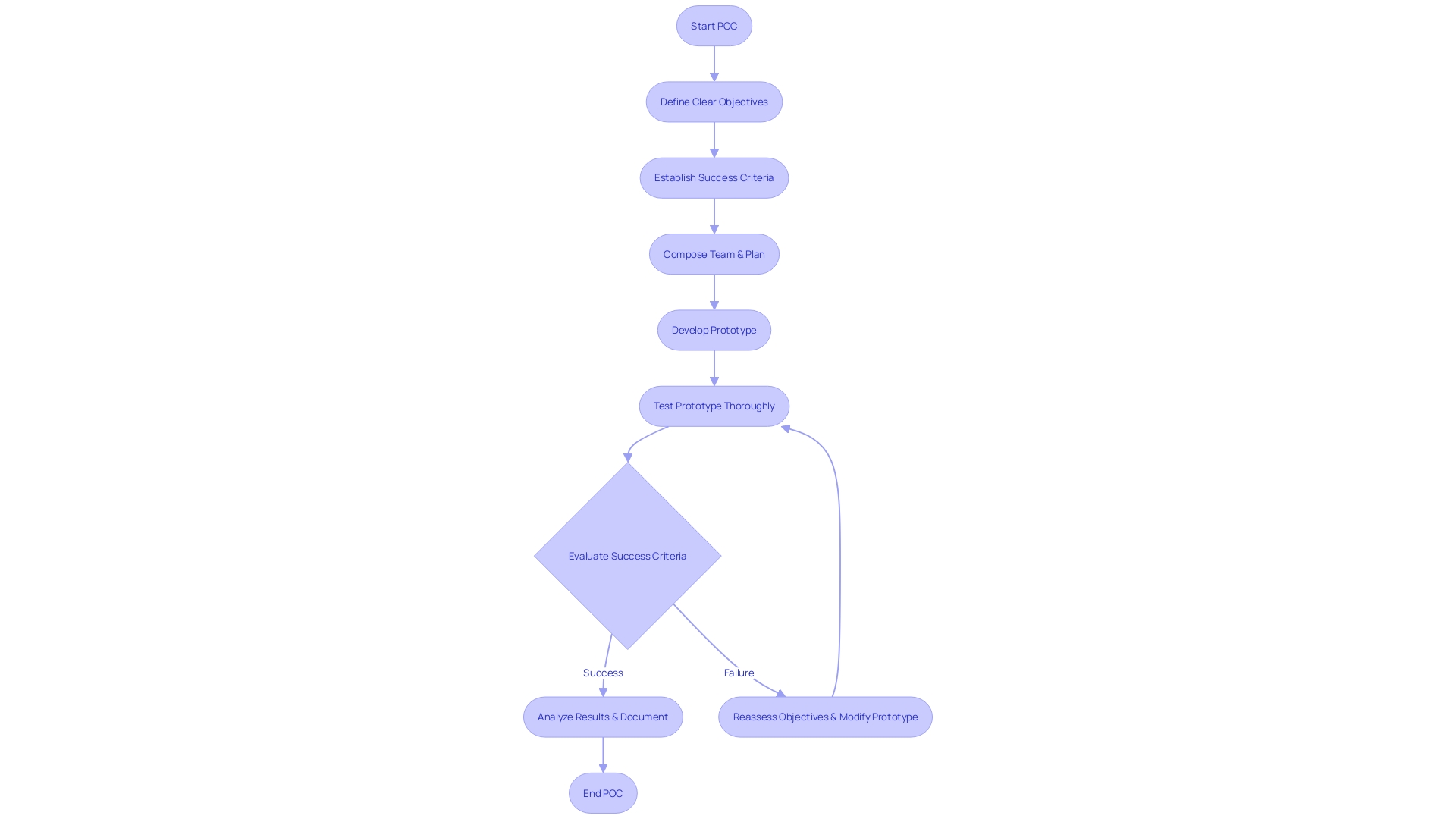Introduction
A Proof of Concept (POC) is a critical step in the software development journey, serving as a small-scale experiment to validate the practicality and potential of a new idea, feature, or product. In this article, we will explore the purpose of a POC in software engineering, the key components of a successful POC, the benefits of creating a POC, and the steps to executing a successful POC in software engineering.
By understanding the importance and process of a POC, you will be equipped to make informed decisions and achieve successful software development outcomes. Let's dive in!
What is a Proof of Concept?
A Proof of Concept (POC) is a critical step in the software development journey, serving as a small-scale experiment to validate the practicality and potential of a new idea, feature, or product. It comes into play during the conception stage when the core aspects of a project are being brainstormed and defined in partnership with visionaries and potential users.
The essence of a POC is to take a theoretically sound concept and give it shape through prototyping, answering with conviction the question, "Can this be done?" The process begins with the marriage of market research and user requirement gathering, utilizing proven methods like use cases.
As Alistair Cockburn illustrated, use cases, developed during requirements engineering, are instrumental for ensuring that the ideas hatched align tightly with user needs. Moreover, they are pivotal in minimizing misinterpretation and fostering alignment between technical and business stakeholders.
This careful planning and analysis pave the way for a POC that not only demonstrates technical feasibility but also encapsulates a viable solution reflecting actual user requirements. By eschewing premature investment in full-scale solutions, the POC offers a sandbox for experimentation, enabling businesses to economically evaluate whether a concept meshes with strategic objectives. It's not merely about proving the possibility but also about precise knowledge transfer, where the diversity in work styles between business and IT is bridged seamlessly. Such meticulous groundwork is essential, considering that substantial progress has been made in fields such as computer vision, which demands an acute awareness of both technological advances and community support. A well-executed POC embodies this ethos, leveraging robust planning and specificity to ensure it carves a clear developmental path forward.

The Purpose of a Proof of Concept in Software Engineering
Proof of Concept (POC) represents a critical phase in software engineering, one that targets the heart of technical and functional uncertainties. It's the litmus test for a burgeoning software idea, providing an early evaluation of a concept's feasibility through use case scenarios, as emphasized by Alistair Cockburn in 'Writing Effective Use Cases'. This method not only illuminates viable pathways but also measures cost-effectiveness prior to significant investment.
Effective POCs streamline the knowledge exchange between business stakeholders and engineers, overcoming common translation issues between commercial objectives and technical execution. Contrary to past assumptions that software productivity lies beyond the measure, insights from McKinsey suggest a moving Landscape. Developer productivity, when benchmarked with precision, can prove invaluable to the iterative processes characteristic of Pics.
Software solutions, now more than ever, can be shaped directly by those with the technical prowess, underlining the importance of configuring a clear, identifiable data model during the early stages of POC development. To embark on the journey of software creation, one commences with concept brainstorming, which is critical to pinpoint the idea's distinctive value proposition. By aligning market needs with specific software functionalities, the resulting POC underscores not just the promise of an idea, but also its preparedness for the market.
Gall's Law speaks to this phased progression, advocating for simplicity before complexity, reinforcing the necessity of starting with a functional simple system. It mirrors the meticulous planning and prototyping reminiscent of factory lines' annual updates, where assumptions are tested and systems are refined to ensure both reliability and innovation. Thus, a software’s POC embodies this philosophy, serving as the blueprint for successful product development and deployment.
Key Components of a Proof of Concept
Launching a Proof of Concept (PoC) emerges as a pivotal experimental phase in discerning whether a business IT initiative is viable and in harmony with strategic goals. A PoC is not simply an activity; it's a comprehensive strategy that includes the following intrinsically linked components:
-
Problem Statement: Initially, one articulates the precise challenge the technology seeks to resolve. This echoes the method of gathering user requirements through use cases, a technique pioneered by Alistair Cockburn, which ensures alignment with user needs while capturing granular details of the desired solution.
-
Objectives: It's imperative to establish explicit targets that the PoC endeavors to attain. In line with McKinsey's assertions, defining the outcomes for productivity and efficiency benchmarks is crucial. - Methodology: A carefully articulated approach, including both the development process and user-oriented requirement gathering techniques, is the methodical pathway that steers the PoC's trajectory.
-
Technology Stack: A clear identification of the technologies and tools to be utilized, showcases not only the foundation but also the potential scalability and adaptability of the solution, underscored by the comprehensive documentation exemplified by cyber defense firms like Dectar. - Implementation: Engineering a scaled-down model of the solution grants a tangible representation of its functionality, mirroring a trend where technically adept users can become creators themselves, empowered by new technology paradigms. - Evaluation: Meticulous assessment is conducted for appraising the performance, scalability, and usability, measured against distinct metrics as exemplified by machine learning evaluation techniques like precision or recall.
-
Documentation: Chronicling every phase, from conception to evaluation, provides an archival blueprint of the developmental journey, informing both present understanding and future endeavors. Grounding the PoC in real-world applicability, this strategy enables organizations to gauge market needs, thereby thwarting potential startup failures attributable to a lack of product validation as reported by CB Insights. Executed astutely, a PoC is an enterprise's forerunner to achieving pivotal business outcomes such as digital transformation and customer experience enhancement, as elucidated in a recent IDC survey.

Benefits of Creating a Proof of Concept
Pioneering a new software initiative is akin to navigating uncharted waters, where a Proof of Concept (POC) is the vessel that can lead to a successful voyage. At its core, a POC is a concise exercise, essential to assessing the technical feasibility of a fresh idea or technology. Far more than a simple tech trial, POCs hold the power to circumvent potential hurdles, technically and financially, through judicious scrutiny in the initial stages of development.
When executed thoughtfully, POCs embody risk management at its finest, preempting technical impediments and streamlining the path to a robust product. Companies can identify the most resource-efficient methods, thereby optimizing expenses. Conceptually akin to Alistair Cockburn's use cases, which act as blueprints for the envisioned solution, a POC translates the abstraction of requirements into tangible form, facilitating a smoother knowledge transfer from concept to creation.
This tangible form does more than just bridge the communication gap with stakeholders; it demonstrates, in a practical sense, the tangible benefits of a proposed solution, enhancing stakeholder engagement. Furthermore, embodiment of user feedback during these formative stages can pivot a good software idea into an indispensable tool tailored for the user. Following the guidance of industry savants like Alberto Savoia, a concise POC focuses on a Minimum Viable Product (MVP) that distills the essence of the solution in a singular, clear sentence.
Finally, POCs are instrumental in conserving an invaluable resource: time. By refining technical and functional aspects early on, they act as a safeguard against redundant efforts. The relevance of this approach is underscored by news from the global management consulting firm McKinsey, who highlight the necessity for measurable development strategies in software engineering—a field that's increasingly pivotal in a world that gravitates towards technology acceleration and wherein millions of new developers are being integrated into the software economy.

Steps to a Successful Proof of Concept in Software Engineering
Executing a Proof of Concept (POC) in software engineering is a critical step in validating potential software solutions while mitigating risk. A well-crafted POC begins with defining clear objectives by outlining measurable goals, akin to using Alistair Cockburn's endorsed technique of gathering user requirements through use cases.
Next, the POC’s success criteria should be evaluated with precise metrics, paralleling the importance of measurable development productivity detailed by a McKinsey report. To materialize the concept, a team with the correct mix of skills is essential.
This team needs to meticulously plan the POC, considering both the complexity and the simple systems approach suggested by Gall’s law. Development of a functioning prototype must align with this, focusing on core functionalities and avoiding unnecessary complexity.
Thorough testing and evaluation of the prototype should follow, assessing performance and scalability. This phase should mirror the discipline of manufacturing plants' discovery and prototyping processes described in the analogy of assembly line updates for new car models, thereby ensuring a systematic approach to innovation and validation. Finally, results need to be analyzed rigorously, similar to the business workflow of a quality assurance engineer in a test environment, leading to informed recommendations. The culmination is detailed documentation of the process, capturing the nuanced challenges, learned lessons, and strategies required for future development efforts. This systematic methodology promises not just a successful POC but a stronger foundation for eventual large-scale deployment.

Conclusion
In conclusion, a Proof of Concept (POC) is a critical step in software engineering that validates new ideas, features, or products. It minimizes risks, optimizes resources, and bridges communication gaps between business stakeholders and engineers.
Key components of a successful POC include defining a problem statement, setting clear objectives, following a well-defined methodology, implementing a scaled-down model, evaluating performance, and comprehensive documentation. Creating a POC offers benefits such as risk management, resource optimization, stakeholder engagement, and time-saving.
It translates abstract requirements into tangible form, incorporates user feedback, and focuses on a Minimum Viable Product (MVP) for clear direction. Executing a successful POC involves defining objectives, evaluating success criteria, forming a skilled team, careful planning, focusing on core functionalities, thorough testing and evaluation, rigorous analysis, and detailed documentation. By understanding the purpose, benefits, and steps of a POC, software engineers can make informed decisions and achieve successful outcomes. The POC process empowers them to validate ideas, mitigate risks, optimize resources, and deliver innovative solutions that meet user needs.





